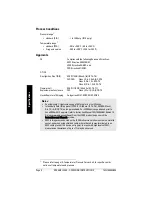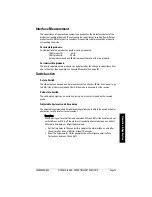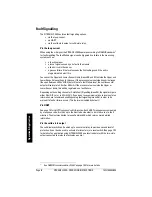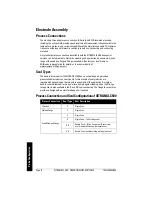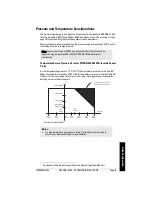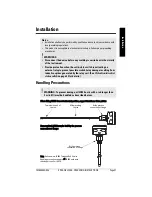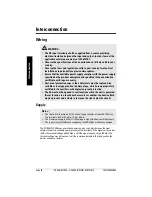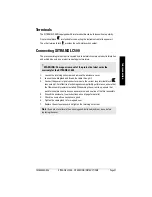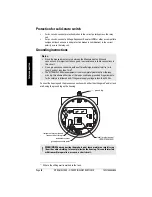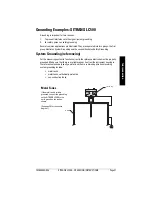
Page 16
SITRANS LC500 – OPERATING INSTRUCTIONS
7ML19985GE04
Oper
at
ion & Appl
icat
ion
Fault Signalling
The SITRANS LC500 has three fault signalling options:
•
via the loop-current
•
via HART
•
via the solid-state output or solid-state relay.
Via the loop current
When using the mA signal, the SITRANS LC500 operates according to NAMUR standards
1
for fault signalling. The fault/failure signal can be triggered by a failure in the measuring
system, such as:
•
a checksum error
•
a loss of signal caused by a defect in the module
•
a short circuit in the sensor
•
a process failure if the level exceeds the limit settings and if the unit is
programmed to detect this
You can set the Upper and Lower Sensor Limits (menus 0B and 0C) outside the Upper and
Lower Range Value settings. In this case, if the process value is outside its nominal range
(the span between LRV and URV), but still not at a fault/failure level, the continuous mA
output will saturate to 3.8 mA or 20.5 mA. If the process value is outside the Upper or
Lower Sensor Limits, this will be registered as a fault/failure.
Depending on the setting chosen for 2-state Fault Signalling (menu 08), the signal will go to
either 3.6 mA (F: Lo) or to 22 mA (F:Hi). If you do not use communications to receive status
information, we recommend enabling analog fault signalling (menu 08), in order to be
warned if a fault or failure occurs. (This feature is disabled by default.)
Via HART
See page 76 for
HART Response Code Information
. Each HART message is accompanied
by a response code. It is then up to the Host to decide what to do in the case of a fault
situation. The Host may decide to issue Command 48, which returns more detailed
information.
Via the solid-state output
The solid-state switch can be wired up to an external relay, to provide a second level of
protection. It can then be used to activate a failure alarm, or a level switch. (See page 102
for details of an application using SITRANS LC500 as a level indicator, with the two-state
output connected to a relay that activates a pump.)
1.
See
NAMUR recommendation NE 43
on page 105 for more details.







